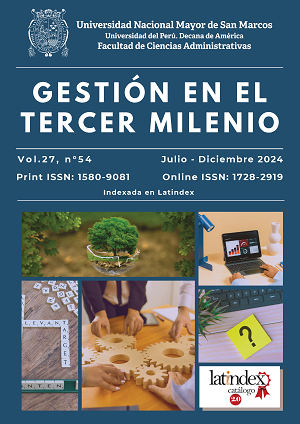Lean Construction and its Impact on the Productivity of Puno Private Civil Construction Companies
DOI:
https://doi.org/10.15381/gtm.v27i54.27640Keywords:
lean construction, productivity , construction , transformation theory , flow, value (TFV)Abstract
In the aftermath of the COVID-19 health crisis, the Peruvian government's policy of stimulating economic revitalization led to strong investment in the construction sector, particularly in the city of Puno. However, the demand for construction projects challenged many companies to adopt new strategies and methodologies. In this context, the purpose of this study was to determine the extent to which the Lean Construction method affects the productivity of Puno private civil construction companies. To this end, a quantitative approach methodology was used, at a descriptive-correlational level, with a non-experimental cross-sectional design, using a validated questionnaire that was applied to five representatives of 16 authorized Puno private civil construction companies. The results indicated a strong positive correlation of 0.912 between the variables, as well as in the dimensions of the Transformation, Flow, and Value (TFV) model. Finally, it was concluded that the Lean Construction method has a significant impact on the productivity of Puno private civil construction companies. However, despite the obvious correlation between the variables, companies showed a limited adoption of this methodology, which was reflected in the occasional adoption of these practices, and this was evidenced in the fluctuating productivity rates, which suggests a significant challenge in taking full advantage of the benefits that Lean can offer to the construction sector.
Downloads
Published
Issue
Section
License
Copyright (c) 2024 Julimar Ximena Aguilar Quenta

This work is licensed under a Creative Commons Attribution 4.0 International License.
THE AUTHORS RETAIN THEIR RIGHTS:
(a) The authors retain their trademark and patent rights, and also over any process or procedure described in the article.
(b) The authors retain the right to share, copy, distribute, execute and publicly communicate the article published in Gestión en el Tercer Milenio journal (for example, place it in an institutional repository or publish it in a book), with acknowledgment of its initial publication in the Gestión en el Tercer Milenio.
(c) Authors retain the right to make a subsequent publication of their work, to use the article or any part of it (for example: a compilation of their work, lecture notes, thesis, or for a book), provided that they indicate the source. of publication (authors of the work, magazine, volume, number and date).






